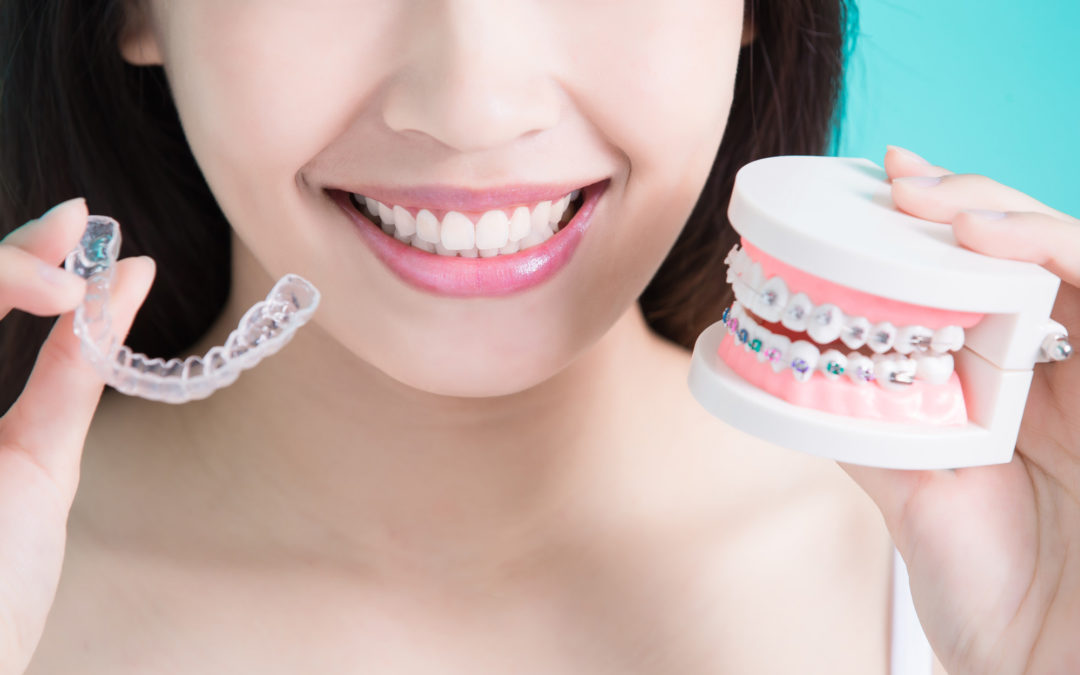Ninety-six percent of people report that a smile is important to an individual’s overall appearance. So in order to get beautifully aligned, healthy teeth many people choose to get braces or Invisalign.
But between Invisalign and braces, which one is right for you or your child? Good question! This decision comes down to a few important personal preferences and priorities.
Read below for everything you need to know about the Invisalign vs braces debate.
Price
If the cost of treatment is a concern, traditional braces are usually the more affordable option. Braces generally cost between $2,500 and $8,000.
Invisalign costs will vary depending on how many trays are required. The number of trays is dependent on the severity of the changes needed to your teeth. Invisalign may cost anywhere between about $3,500 and $8,000.
You can talk to your orthodontist about the price before making a decision. If you have dental insurance, they may offer some or full coverage of the cost of braces or Invisalign. You can contact your insurance or check your coverage to estimate the total cost of either braces or Invisalign.
Appearance
The biggest difference between braces and Invisalign is appearance, and Invisalign is going to win this category every time. Invisalign is virtually undetectable while typical metal braces are more noticeable.
Invisalign trays are made from a clear plastic material whereas braces are metal. Some kids enjoy picking out different colored bands for metal braces, but for the most part children and adults alike prefer the appearance of Invisalign.
If you are someone that wants your teeth alignment to be discreet, Invisalign is the superior choice.
Comfort
Straightening your teeth is not always the most comfortable experience. Whether you have braces or Invisalign the process of shifting the alignment of your teeth may be painful.
However, Invisalign tends to be more comfortable than traditional braces because it applies less pressure to the teeth overall. Braces can also have sharp edges that can cut the inner lip and the tongue.
If you or your child plays sports, metal braces can be a safety risk if there is incidental contact.
Over time people get used to either braces or Invisalign and find that they can be relatively comfortable.
Effectiveness
Braces have been used to straighten teeth and beautify smiles for years. Braces cannot be removed by the patient and therefore they have to wear them 24 hours a day, 7 days a week as is recommended by the orthodontist.
The challenge with Invisalign is that the trays are removable, so patients may not always comply with the suggested time of use. Moreover, if you forget or misplace the trays, your teeth are going to shift while you are not wearing them
People with Invisalign generally wear the trays less than the recommended amount which can lengthen the total time it takes to complete treatment.
Traditional braces are also more effective in cases where the teeth are severely misaligned. Invisalign cannot always straighten teeth that are rotated or overlapping.
If you are concerned about whether you could be a candidate for Invisalign, you can book a free consultation and see.
Convenience
Both braces and Invisalign have pros and cons in terms of convenience. Braces are convenient because you don’t have to take them out, but they can prevent you from eating certain foods which is annoying.
Invisalign is convenient when you want to eat your favorite hard or sticky foods, but remembering to take out the trays and store them securely is often overlooked.
If you or your child are prone to misplacing things, Invisalign may not be the best option. It can also be challenging in social situations to excuse oneself to remove the Invisalign trays before eating and to put them back in after eating.
Care and Cleaning
Cleaning your teeth should be a priority regardless of whether you have braces or Invisalign. Typically the cleaning process is easier with braces because you can brush and floss normally. However, if there is food stuck in the metal you may need to use a smaller brush to clean.
With Invisalign brushing and flossing is the same, but there is some additional effort required to keep the trays clean. Each time you eat you should clean the trays. You can use warm water to rinse and brush or a special Invisalign cleaning solution.
Cleaning the crevices of the Invisalign trays can be a hassle especially if you are away from home. And without proper cleaning there can be a build-up of bacteria or solid food.
Being diligent about oral health is even more important when you have braces or Invisalign, so don’t forget to brush and floss!
Follow-Up and Post-Treatment
Regular orthodontic appointments are recommended whether you have braces or Invisalign. For braces, this usually means about every month and for Invisalign every 4-6 weeks.
Once you have completed your treatment with braces you will be required to wear a retainer of some kind (usually just at night) to ensure the teeth maintain their position. Without that, you risk your teeth moving back to the way they were before.
Invisalign also requires that you wear a tray at night once your treatment is complete.
Invisalign vs Braces: The Verdict
The fact of the matter is that in the debate between Invisalign vs braces it all comes down to personal choice. So, to make the decision that is best for you or your child, you should weigh the categories above.
It is also critical that you consult an orthodontist to determine whether you can get Invisalign. Certain scenarios may preclude you from this kind of treatment.
Don’t wait to change your smile and start feeling more confident today. Whatever you choose, practice good oral hygiene and stay in communication with your orthodontist if you have questions.
For more helpful orthodontic tips, check out some of our other blogs or come visit us in person at one of our convenient locations.
